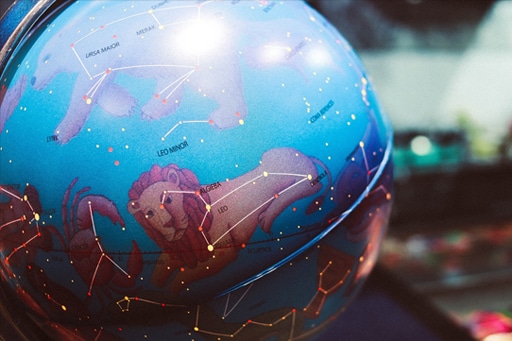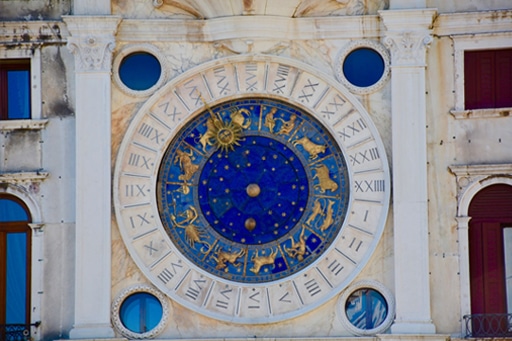Sidereal astrology is a topic that has long intrigued enthusiasts. It is so fascinating, yet also complicated, especially for those who are new to the art.
But for many professional astrologers, this astrological format can help people understand what the cosmos have in mind for them. Many even claim that it is more accurate than the mainstream Western one!
However, for someone to fully utilize the powers that sidereal astrology has, they must have a thorough understanding of the topic at hand. Luckily, we compiled this run-through to give you a comprehensive way of understanding this ancient art!
What is sidereal astrology?

The word sidereal comes from the Latin word “sidus,” meaning star and the English word “real.” From this name alone, we can conclude that this astrological format orients itself with the stars’ present position in the cosmos, not on their placement relative to our perspective.
This characteristic sets them apart from the typical Western astrological format that utilizes the “tropical” astrology that uses our present positions on earth. When the Western tropical astrology compares with the sidereal, there is a difference of 24 degrees.
It may not seem much, but mathematically speaking, it sets the two astrological types apart. This is why some people claim that sidereal is “more accurate” than the tropical.
This astrological format is commonly associated with Vedic Astrology or Jyotish. Though they do not strictly follow the rules set out by sidereal calculations, they mostly follow the measurements, especially when giving predictions.
How is sidereal astrology more accurate? (And is it like that for real?)

Tropical astrology based on calculations made over 2000 years ago, during the start of the common era or CE. As time passed, astrologers made hardly any adjustments, despite the wealth of astrological phenomena that happened over the course of millennia.
However, its sidereal counterpart changes, even at the slightest tilt made by a heavenly body.
For example, we were taught at school that a day lasts for 24 hours. Yet in actuality, it only takes Earth 23 hours, 56 minutes, and 4.09 seconds to rotate and make one complete solar day.
Therefore, that time is how long one point on Earth could go from 12:00 AM to 11:59 PM. Yet, because of the 24-degree discrepancy, sidereal time factors in the 3 minutes and 56 seconds left to make the 24-hour trip.
This type of difference won’t make much difference when placed in, say, a five-year or ten-year timeframe. But when it has accumulated over decades (or, in this case, two thousand years), the shifts are radical.
One of the significant differences between the sidereal and tropical astrological traditions is the Zodiacs themselves. Contrary to the traditional 12 signs that people are used to, the sidereal Zodiac has 13.
The thirteenth sign is the Ophiuchus. He is the snake bearer, akin to the legendary Hercules, who strangled a snake when he was still a baby.
This sign falls on December 7 to 18. It is the shortest Zodiac by far, lasting only a measly seven days.
Those born under this sign are notable for embodying the best that all the other Zodiacs can offer, as expected of a sign that closes all the others in a satisfactory ending.
Ophiuchus-born people are spiritually grounded, charming, and intelligent. They have a thirst for knowledge and an eagerness to do things as soon as possible. Their sense of humor is also a huge bonus!
Unfortunately, their wrong side can get pretty nasty too. When Ophiuchus’ mind locks on something, there is almost nothing in the world that can change it.
Jealousy, along with a general mistrust of others, is also a dominant characteristic of an Ophiuchus. They are also prone to having an uncontrollable temper and unsociable most of the time.
As for the other signs, there isn’t much difference in the other Zodiacs’ meaning and affinities, except that the dates they fall on are slightly different.
Here is a quick rundown for the list adjusted sidereal Zodiac dates:
Aries: April 21 to May 12
Taurus: May 13 to June 19
Gemini: June 20 to July 16
Cancer: July 17 to August 6
Leo: August 7 to September 14
Virgo: September 15 to November 3
Libra: November 4 to November 22
Scorpio: November 23 to December 6
Ophiuchus: December 7 to December 18
Sagittarius: December 19 to January 19
Capricorn: January 20 to February 13
Aquarius: February 14 to March 9
Pisces: March 10 to April 20
Most people, though, still prefer to go by their tropical Zodiac sign since it is more familiar and more comfortable to understand. Thankfully, no type of astrology is not absolute and does not have a fixed doctrine.
No matter which astrological format you choose, the stars will always speak the truth. The final decision will always be yours to make.
How can I calculate for my sidereal astrology chart?

For most people, manually calculating one’s astrological chart is a torture session waiting to happen. But there are always those who find it a refreshing, if not spiritually uplifting, activity.
Numerous astrological and astronomical websites have step by step tutorials made by professional mathematicians. These intricacies refined over time and will continue for as long as people interested in the cosmos’ power will exist.
However, it is more advisable for a newbie in astrology to select a much easier option: sites that offer free calculators.
These websites give more accurate results and can even generate a functional chart. If you have any doubts about one site, you can always cross reference it with another (plus, they also calculate faster!).
Final Word
Sidereal astrology is complicated but amazing in all the right ways. It can present the clarity that the heavens want to provide in order for us to live fruitful and productive lives.
While some people may claim it to be the “better” type of astrology, the truth is that no format is better than the other. Each has its strengths and weaknesses, allowing people to explore their identity in a wholesome and holistic manner.
Whether you choose the sidereal or tropical astrology, it doesn’t matter. The stars will always reveal the truth behind everything.
